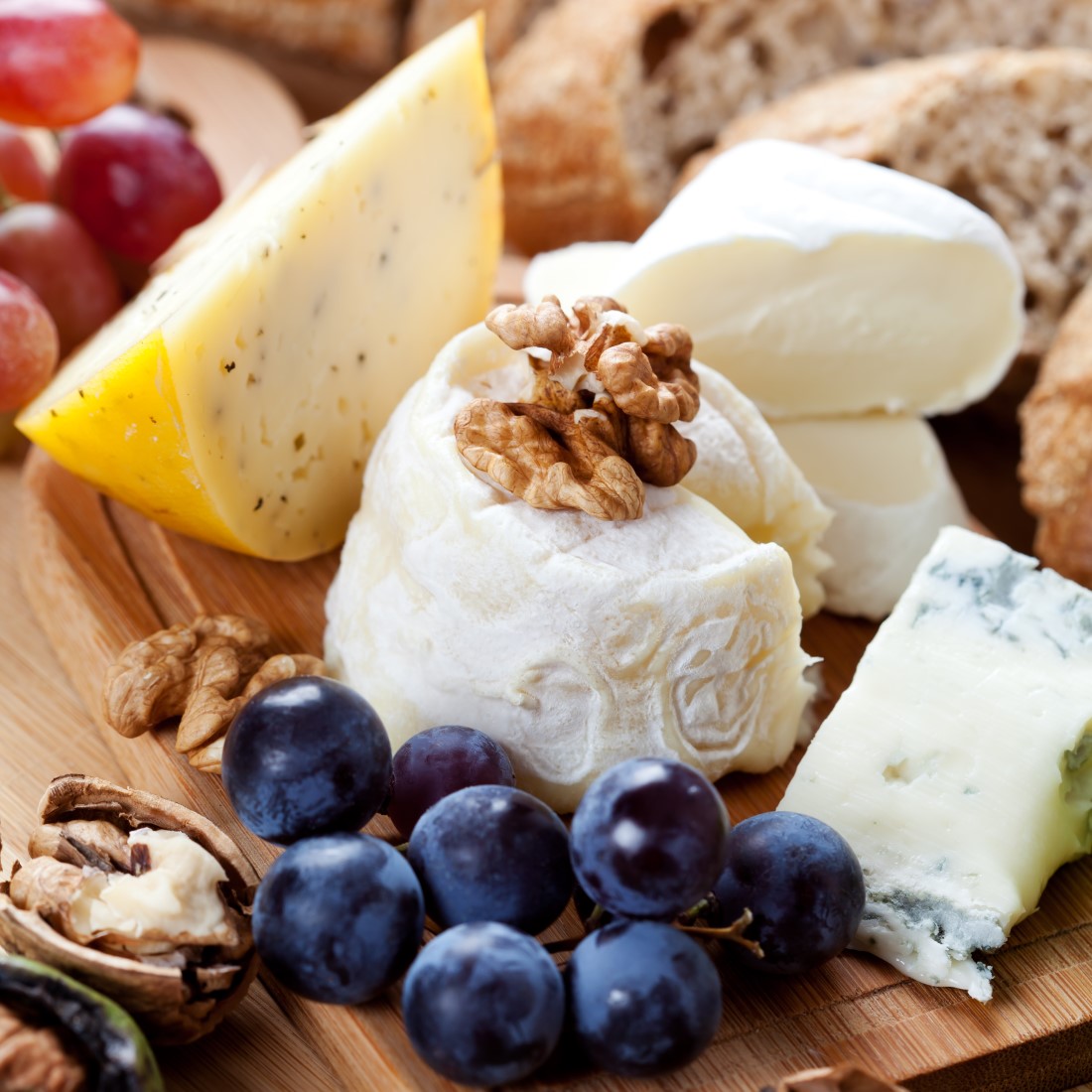Chèvre: a Fermented Goats Milk Cheese
By Greg Roe and Mike De Smidt
When you think of fermentation, cheese may not be what first comes to mind; or even second, or third. But many types of cheeses are indeed the product of fermentation. Some are non-fermented, such as cottage cheese and paneer, where the curds and whey are separated simply by adding an acid. If you introduce bacteria to the milk, however, you’ve begun fermenting; turning the milk sugar, lactose, into lactic acid.
Chèvre is a popular soft goat’s milk cheese that is fermented by the introduction of a combination of bacteria including Lactococcus lactis subspecies lactis, L. lactis subsp. cremoris, and L. lactis subsp. Diacetylactis. Goats were one of the first domesticated animals, thought to be domesticated over 9,000 years ago in the area of what is modern day Iran. In the 700s, the Moors brought goats to the Loire Valley in France. French goat cheeses began here, and Chèvre simply means “goat” in French. Goat cheese of all sorts spread over Europe, but Chèvre remains one of the most popular today in the US.
While you can often find Chèvre in the local grocery store, making your own is easy. Experiment with adding various herbs and spices such as thyme, chives, lavender, rosemary, dill, mint, grated lemon rind, flower petals; whatever your creativity conjures.
So, let’s make Chèvre! Apart from the goat’s milk, you’ll need to get some cheesecloth, and some Chèvre cheese starter (available from Mountain Feed and Farm Supply in Ben Lomond).
Chèvre
Makes 1 – 1.5 pounds of cheese
Equipment
A large cast iron pot, and a smaller non-aluminum pot that will hold 1 gallon of milk
Strainer
Cheesecloth
Dairy/Cooking Thermometer
Ingredients
1 gallon Goat’s Milk
1 packet (½ tsp) C20G powdered Mesophilic Starter Culture
½ tsp fine Sea Salt
Method
Slowly heat the goat’s milk in a non-aluminum pot over low heat until it reaches 86F (30C).
When the milk is up to temperature, remove from heat, and sprinkle in the cheese starter. Wait 5 minutes for it to hydrate. Then whisk the starter into the milk until thoroughly blended. Cover and let cool slightly.
Keep the temperature of the milk between 72F (22.2C) and 78F (25.6C) for 12 hours. One way to do that is to immerse the pot with the milk into a larger cast iron pot filled with water around 70-72F (21.2-22.2C). Having the water at the cool end of what you want will help reduce the milk’s temperature below 78F (25.6C) more quickly. Check the temperature of the milk after an hour. Add cold or hot water to the water bath to help adjust the temperature.
After 12 hours of ripening, the curds should have separated from the whey in a large clump at the top. Using a fine-holed skimmer or slotted spoon, carefully move the curds to a strainer lined with enough cheesecloth so that plenty is draping over the edges. Let drain for 5 minutes. Sprinkle salt over curds and gently fold in. Fold the ends of the cheesecloth up over the top of the curds and let it drain over the sink or into a bowl for 6 hours.
Once curds have drained, carefully move them onto a large sheet of plastic wrap laid over a counter or cutting board. Form cheese into a rough log, wrap it in plastic wrap, and refrigerate for one hour. Use within a week.
Optional: Roll cheese in fresh herbs or spices. Chèvre is great spread on whole grain crackers, sprinkled over a salad, spread on sandwiches, used on flatbreads and pizzas, in tarts and quiches, or even used in desserts, such as a cheesecake. Pair with Sauvignon Blanc, Cabernet Franc, German Pilsner, or a Belgian Blonde.
Ben Lomond local, Mike De Smidt has been homebrewing for 14 years and is a BJCP Certified Beer Judge.
Greg Roe is a Felton local who has been a homebrewer for 22 years and is a self-proclaimed Fermentation Geek.
Featured photo: depositphotos.com
The San Lorenzo Valley Post is your essential guide to life in the Santa Cruz Mountains. We're dedicated to delivering the latest news, events, and stories that matter to our community. From local government to schools, from environmental issues to the arts, we're committed to providing comprehensive and unbiased coverage. We believe in the power of community journalism and strive to be a platform for diverse voices.





